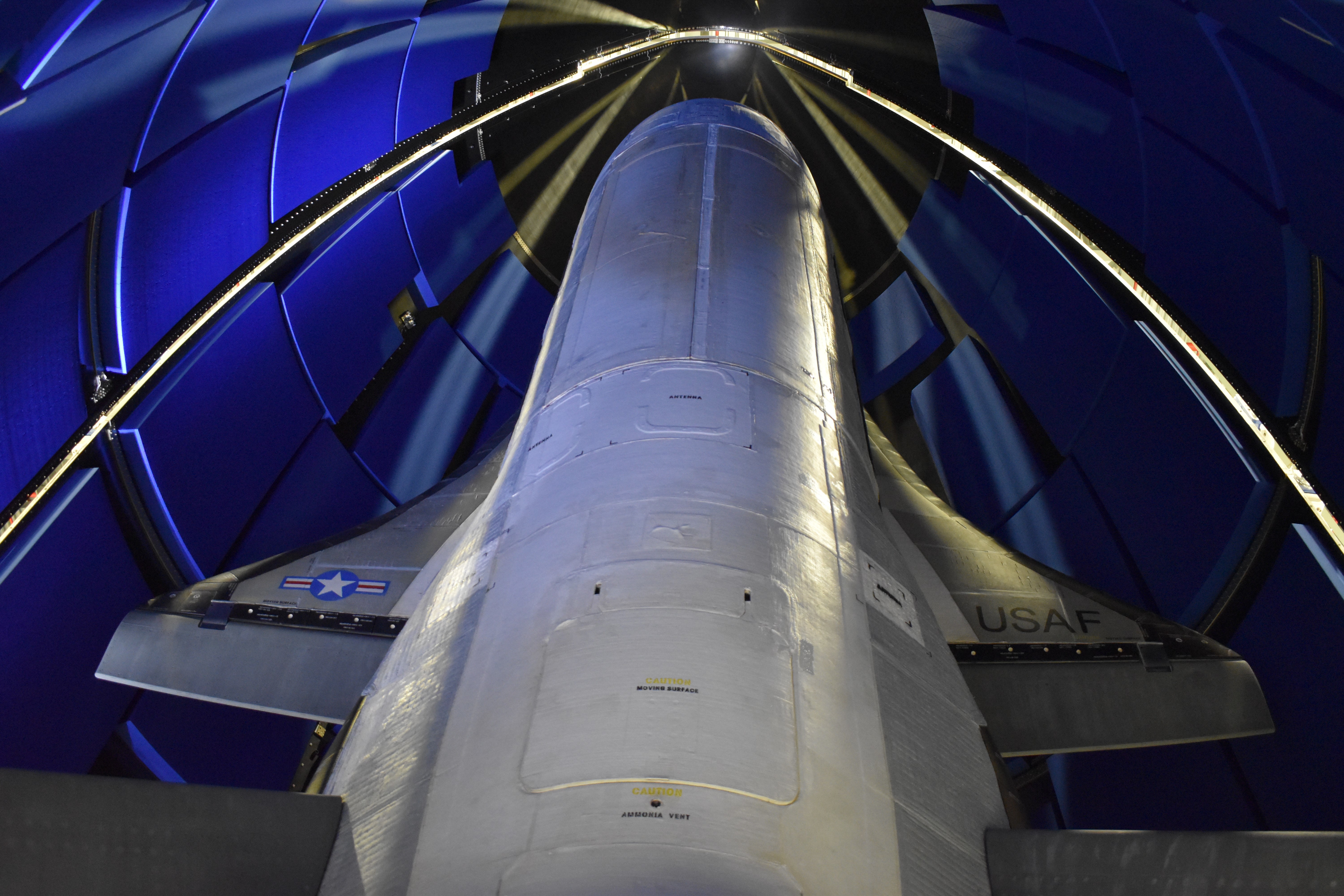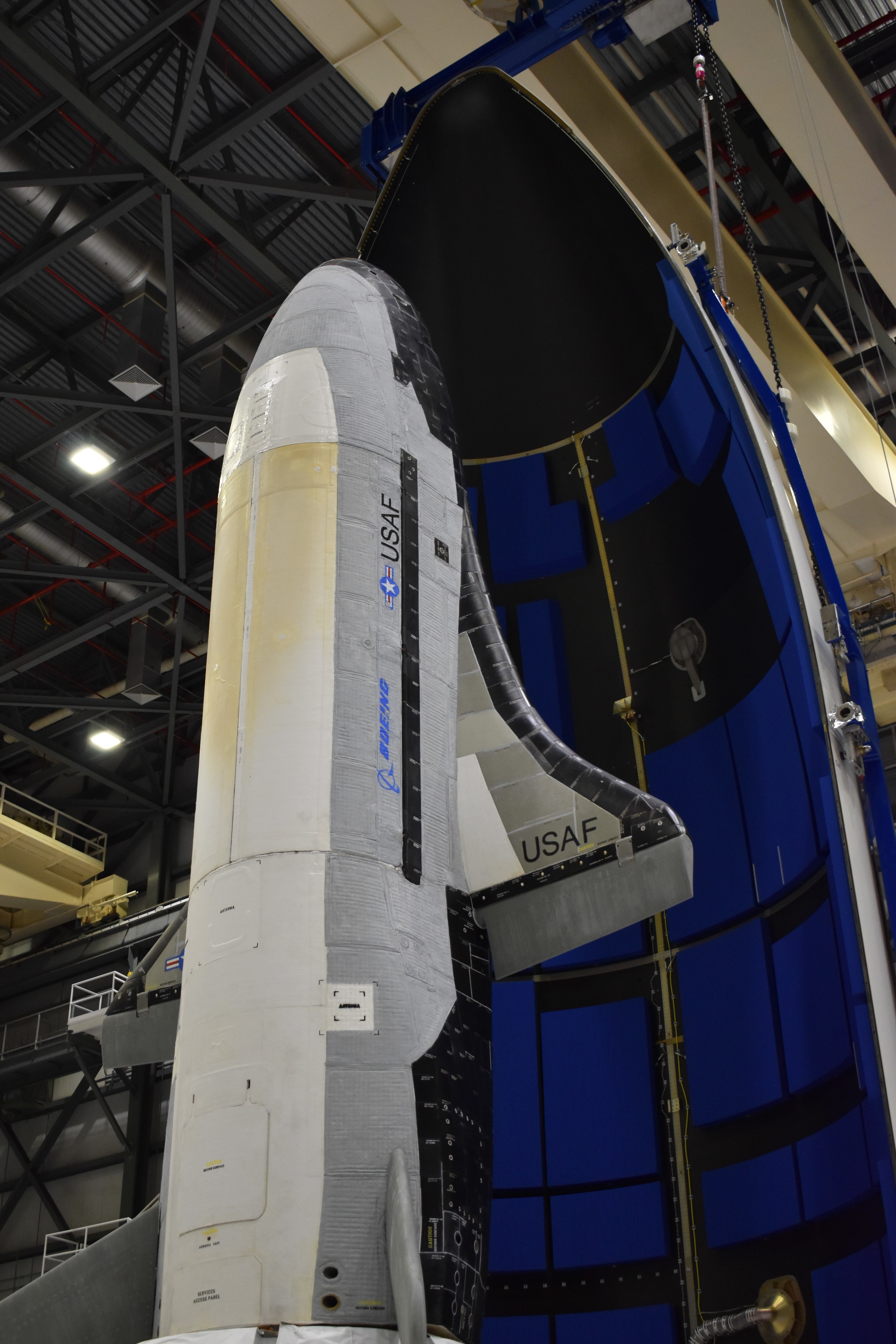Watch how the Space Force will launch an X-37B space plane on a secret mission Saturday
Liftoff is set for 10:23 a.m. EDT (1423 GMT).
Editor's note: Bad weather has delayed ULA's Atlas V launch for the X-37B space plane. Next launch attempt is Sunday, May 17, at 9:14 a.m. EDT (1314 GMT). Watch live here.
The U.S. Space Force is counting down to the planned launch of a secretive X-37B space plane mission on Saturday (May 16), and a new video reveals just how the vehicle will reach orbit.
The mission profile video, released by the United Launch Alliance (ULA) this week, explains how a ULA Atlas V rocket will launch the robotic X-37B space plane on its latest mystery mission for the U.S. military. Liftoff is set for Saturday at 8:24 a.m. EDT (1224 GMT).
The Atlas V rocket will launch in its 501 configuration, with a Centaur upper stage — but no strap-on solid rocket boosters — for this flight. While ULA will offer a live webcast of the launch, the company will cut off that commentary five minutes into the flight at the request of the Space Force due to the mission's classified nature. You can watch that X-37B launch webcast live here, courtesy of ULA, beginning about 20 minutes before liftoff.
"This will mark the sixth flight of the X-37B Orbital Test Vehicle (OTV-6)," ULA representatives wrote in a video description on YouTube.
Related: The X-37B space plane: 6 surprising facts
The U.S. Space Force and Air Force have two X-37B space planes, each of which resembles a small version of NASA's space shuttles. They are 29 feet (8.8 meters) long, have a wingspan of 15 feet (4.6 m) and carry a solar array tucked in a payload bay to generate power.
Breaking space news, the latest updates on rocket launches, skywatching events and more!
The Boeing-built space plane was originally developed for NASA as a research spacecraft but was later transferred to the Defense Advanced Research Agency (DARPA) and ultimate the U.S. Air Force Rapid Capabilities Office, where it now flies classified missions that can last years at a time.
The first X-37B mission, OTV-1, launched in April 2010 and lasted 224 days. The OTV-2 mission, which marked the first use of a second X-37B, launched in March 2011 and lasted 468 days. OTV-3, the first reflight of an X-37B, launched in December 2012 on a 674-day flight.
The OTV-4 mission, another vehicle reflight, launched in May 2015 and lasted 718 days. The most recent mission, OTV-5, launched in September 2017, lasted 780 days and landed in October 2019.
All X-37B space plane missions to date have been classified, with the exact activities of those flights shrouded in secrecy. However some details, such as specific experiments aboard, have been released by Air Force officials.
The X-37B on the OTV-6 mission will carry a small Air Force Academy satellite called FalconSat-8 that has five different experiments onboard. NASA has two experiments of its own on the mission to measure the impact of "radiation and other space effects on a materials sample plate and seeds used to grow food," Space Force officials said in a statement.
The U.S. Naval Research Laboratory is flying a solar power-beaming experiment that will beam microwaves to Earth in a technology demonstration. To accommodate the experiments on OTV-6, this mission will carry a service module, Space Force officials have said.
"This will be the first X-37B mission to use a service module to host experiments," Randy Walden, director of the Air Force Rapid Capabilities Office, said in the Space Force statement. "The incorporation of a service module on this mission enables us to continue to expand the capabilities of the spacecraft and host more experiments than any of the previous missions."
Editor's note: Visit Space.com Saturday, May 16, for live coverage of the X-37B OTV-6 launch, beginning at 8 a.m. EDT (1200 GMT).
- US Air Force's secretive X-37B space plane (infographic)
- In photos: SpaceX launches X-37B space plane, lands Falcon 9 rocket
- Gallery: Declassified US spy satellite photos & designs
Email Tariq Malik at tmalik@space.com or follow him @tariqjmalik. Follow us @Spacedotcom, Facebook and Instagram.
OFFER: Save 45% on 'All About Space' 'How it Works' and 'All About History'!
For a limited time, you can take out a digital subscription to any of our best-selling science magazines for just $2.38 per month, or 45% off the standard price for the first three months.

Tariq is the award-winning Editor-in-Chief of Space.com and joined the team in 2001. He covers human spaceflight, as well as skywatching and entertainment. He became Space.com's Editor-in-Chief in 2019. Before joining Space.com, Tariq was a staff reporter for The Los Angeles Times covering education and city beats in La Habra, Fullerton and Huntington Beach. He's a recipient of the 2022 Harry Kolcum Award for excellence in space reporting and the 2025 Space Pioneer Award from the National Space Society. He is an Eagle Scout and Space Camp alum with journalism degrees from the USC and NYU. You can find Tariq at Space.com and as the co-host to the This Week In Space podcast on the TWiT network. To see his latest project, you can follow Tariq on Twitter @tariqjmalik.



